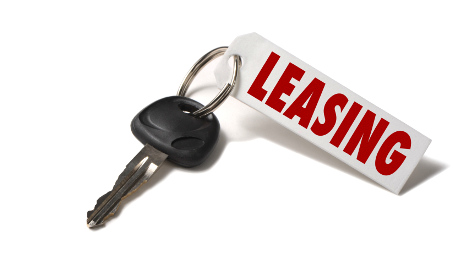Leasing declines, but still impacts used-car market

Lease penetration is down for the first time since 2012, and the decline in leases written is twice as high as the drop in overall new-car sales, according to latest Lease Market Report from Edmunds.
That said, leasing remains close to record highs, and the swell of off-lease volumes hitting the used-car market should continue for some time.
Lease penetration in the first half of the year was at 31.1 percent. A year ago, it was a record 31.9 percent, Edmunds said.
According to a chart in the report, the last time there was a decline in lease penetration during the first half of the year was 2012, when it dipped from 22.6 percent to 21.4 percent.
Rates then climbed for four straight years.
There were 2.1 million vehicle leases in the first six months of 2017, down 4.4 percent year-over-year. That dip is twice as high as the overall decline in new-car sales, which was at 2.2 percent, Edmunds said.
“Leasing remains a popular choice among car shoppers, but the era of steady growth is over,” Edmunds executive director of industry analysis Jessica Caldwell said in a news release.
“This year we’re seeing a drop-off in trade-ins going toward leases, signaling that the pool of people opting to lease is shrinking,” she said. “Automakers are becoming more reliant on buyers already in the leasing cycle and first-time car buyers.”
However, Edmunds is still expecting 4.3 million leases this year, which would be the second-highest total (next to last year’s 4.5 million leases) in the report’s 11-year data set.
“We may be hitting a ceiling on leasing, but automakers will continue to keep feeding the machine because it’s a selling tool that’s too valuable to neglect,” Caldwell said. “Leasing remains an incredibly popular way for consumers to afford the cars they want, so automakers are digging deeper to offer the eye-catching payments consumers have come to expect.”
And counting 2017, annual lease volumes have been above 3 million for five straight years. Though the total volume is likely to dip this year, there has been an increase in annual lease volumes every year since 2009, according to Edmunds.
Based on the numbers the company provides, there were 14.3 million vehicles leased between 2014 and the first half of this year.
That certainly has had and will likely continue to have a dramatic impact on the amount of late-model used-car supply reaching the market.
Cox Automotive predicts there will be 3.6 million lease returns this year, with 4.6 million set for 2020.
A year ago, there were 3.0 million.
And all of this can impact prices on those late-model used cars.
The value of a 3-year-old vehicle in the first half of 2017 was down an average of 35.6 percent from its original value, Edmunds said. In 2014, depreciation was just 31.8 percent for 3-year-old cars.
“This increase in depreciation indicates leasing is becoming a more expensive endeavor for automakers. In order to offer consumers low monthly lease payments, automakers must increase their incentive spend to offset the drop-off in used values,” the Edmunds report said.
Average lease incentives were at $4,400 in the first half of the year, compared to $3,700 in the same period of 2016. This year’s figure is also the highest in Edmunds' 8-year data set of first-half lease incentive spending.
Ironically, Edmunds said the increased incentives don’t necessarily result in a better deal for the lessee: “Instead, the outlay is merely mitigating the predicted decline of a vehicle’s future value.”

 View The Latest Edition
View The Latest Edition

